It is supposed to be one of the oldest cities in the world that have been continuously inhabited. Some passionate locals claim that it is the oldest such city in the world. For the Hindus, it is the holiest of holies, the gateway to heaven and therefore, the preferred departure point for their final journey.
Varanasi must be one of the most storied cities in the world, one of the truly great cities. To put it mildly, it is an overwhelming city that assaults your senses. It is possible to decode Varanasi at different levels, depending on how deep you want to look, what your worldview is and which aspect of the city you encounter during your visit. For instance, while it is revered by many for its spiritual overtones, it is reviled by many others at the same time. Reviled for being another grimy, crowded, chaotic Indian city and for the various shady operators who try to rip tourists off.
But revere it or revile it, you cannot be indifferent towards it.
In ancient times, this city was known by the name ‘Kashi’. Even today, Hindus across the world refer to their trip to this city as ‘Kashi yatra’. Weddings in the South Indian Iyer community feature a ritual known as ‘Kashi yatra’, in which the groom symbolically renounces this material world and embarks on a journey to Kashi to live in abstinence for the rest of his life. Until, of course, the bride’s family manages to ‘convince’ him and bring him back.
In time, it got a second name ‘Varanasi’ and a third ‘Banaras’. Not many know that ‘Varanasi’ is the conjoined result of the names of two rivers that flow by the city: Varuna and Assi.
Look beneath its spiritual cloak and you will discern several little known facts about this city. For instance, the famous queen Rani Lakshmi Bai of Jhansi was born here. But today, her place of birth lies forgotten and forlon in a corner of this city. Varanasi offers you some of the best vegetarian food, especially chaat. The city is home to a fine architectural legacy left behind by erstwhile rulers and noblemen. Just 12 kms (8 miles) away likes the tiny town of Sarnath, where Gautam Buddha gave his first sermon after gaining enlightenment. And finally, it is a hub for tabla-making (the tabla is the chief percussion instrument in Hindustani classical music).
So friends, here is Varanasi in its various shades. Hope you enjoy this photo essay. Please leave a comment after the post. And if you want to know anything more about this city or plan your trip to it, I will do my best to help you.
P.S. These photos were taken when I was not yet a good photographer. I was still learning the ropes. Still, I want to share them with you to bring out the various shades of this interesting city. So, bear with me on this please. 🙂
______________________________________________________________________________
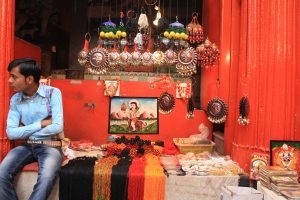
At the Kal Bhairav temple, a vendor looks out for tourists who will buy his wares as an offering to the Lord.
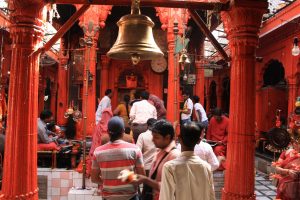
Devotees inside the Kal Bhairav temple. The deep red of the pillars and the walls give the temple a very tasteful look. This temple is dedicated to Lord Shiva in a fierce incarnation of Kaal (meaning both ‘fate’ & ‘time’ in Hindi). He wears a garland of skulls and wields a club made of peacock feathers.
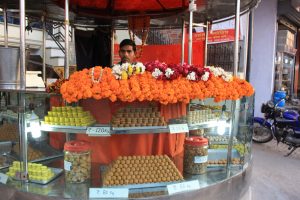
Flowers and sweets on sale. The flowers to appease the Gods and the sweets to appease your tummy. 🙂
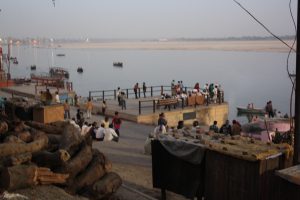
Dusk falls on one of the ghats lining the holy river Ganga.
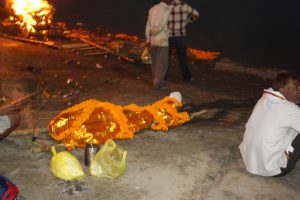
You are in queue for salvation. A corpse lying on the steps of the ghat, waiting for its turn to be burned. Afterwards, the ashes will be scattered in the Ganga.
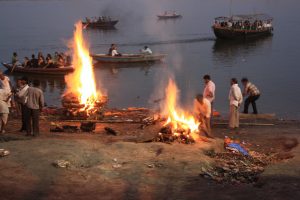
Burning pyres. It is indeed true that even this supposedly noble act of cremating a body has been turned into a racket in Varanasi. Those who want the body of a loved one consigned to the flames here reconcile themselves to touting, ‘commissions’ and a long waiting line.
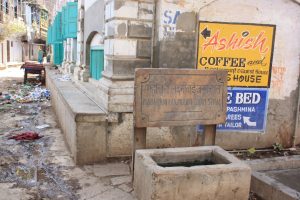
The faded inscription on this board is the only indication of the historic importance of this place. Rani Lakshmi Bai was born in 1828 in a house that stood here.
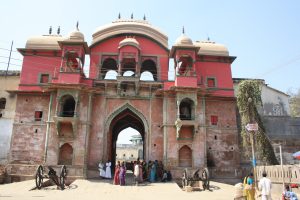
The Lal Darwaza, one of the entrances to the Ramnagar Fort, built by the erstwhile ruler of Banaras, Raja Balwant Singh, in the 18th century.
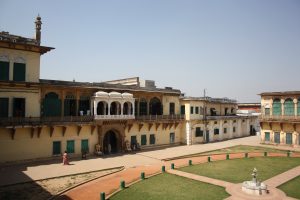
The chequered lines of the pathways and lawns inside the Ramnagar Fort. The Fort was also known as ‘Kashi naresh ka qila’ (meaning ‘the fort of the lord of Kashi’ in Hindi.)
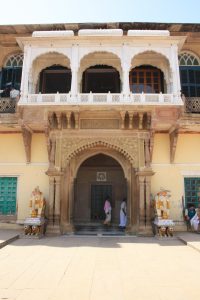
One of the viewing galleries inside the fort.
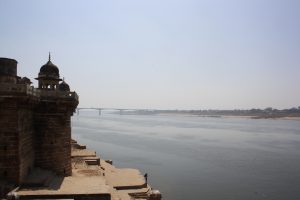
And quietly flows the Ganga, watched over by the fort. The pavilions on the rampart of the fort give you beautiful views of the river.
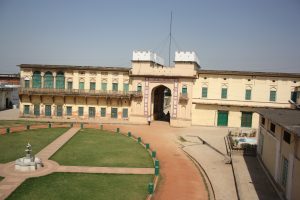
Symmetrical lines and contours inside the fort.
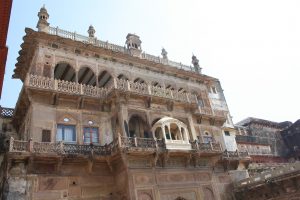
A royal pavilion overlooking the Ganga.
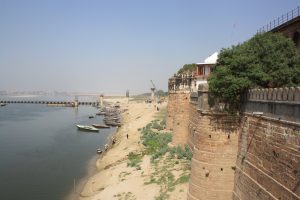
Boats waiting to take tourists across the river.

The lovely ornate entrance to the Buddhist monastery in Sarnath, 8 miles from Varanasi.
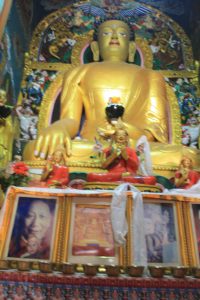
The Buddha. Need I say more?
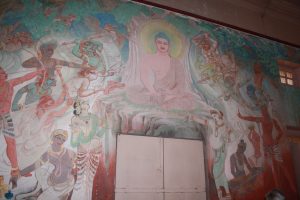
This mural on a wall of the monastery shows the Buddha in deep meditation.
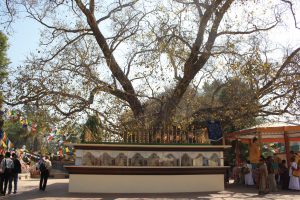
The more-than 2000 year old Bodhi tree under which The Buddha is said to have delivered his first sermon after attaining nirvana.
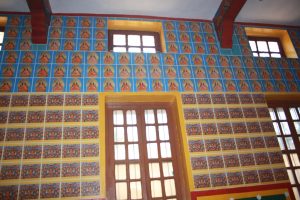
More murals on the walls of the monastery.
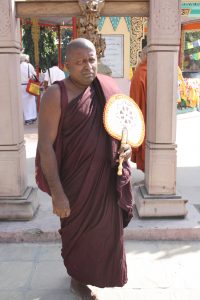
A Buddhist monk of the Theravada order from Sri Lanka.
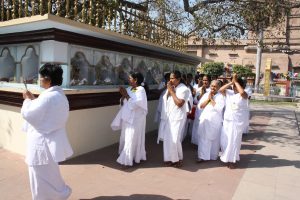
Buddhist women from Sri Lanka, who are on a pilgrimage to important sites in India. Buddhists from South Asian and South East Asian countries flock to places that feature prominently in the Buddha’s life. Sarnath is definitely one among them.
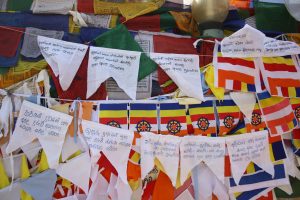
Wind horses, as the prayer flags are also called, are supposed to carry the prayers of devotees to the lord.
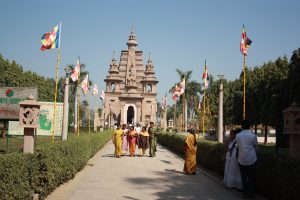
The Sarnath temple, seen from a distance.
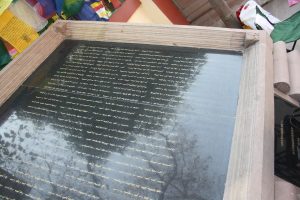
A long message inscribed on a stone slab, the interesting feature being that it is in the Mangolian script.
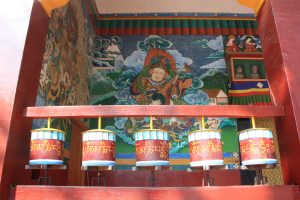
Devotees make it a point to turn the prayer wheels.
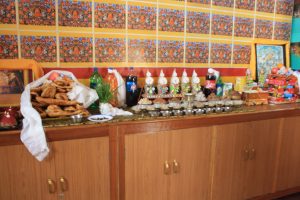
Votive offerings for the Buddha. Offerings range from bowls of water (considered the purest offering) to flowers and small cups of butter. Curiously, even soft drinks are offered by some people.
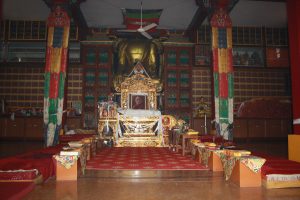
The prayer hall. A photo of the Dalai Lama is placed at the centre, flanked by two rows of seats for the chanting priests. When I visited, prayers were being chanted for a peaceful and prosperous new year.
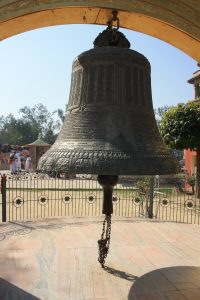
This bell weights two tons. That’s right, two tons. Put up in the deer park in Sarnath, it tolls twice daily. Apparently, it can be heard 4 kilometres away.
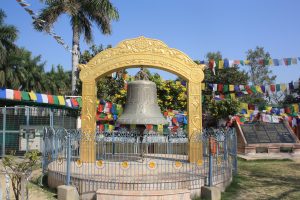
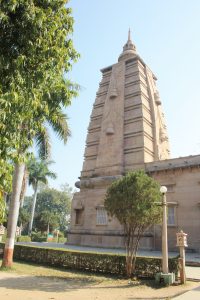
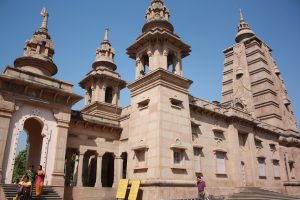
Two other views of the Sarnath temple.